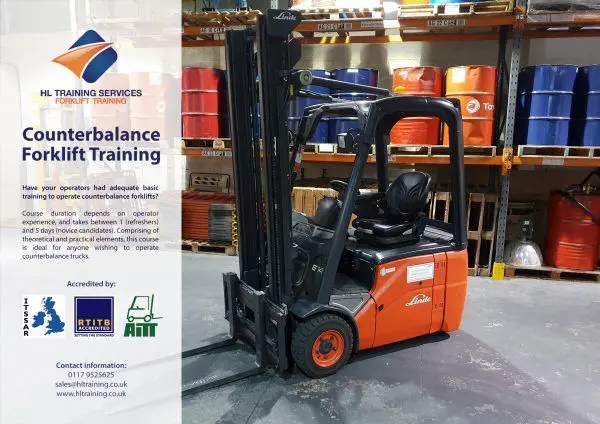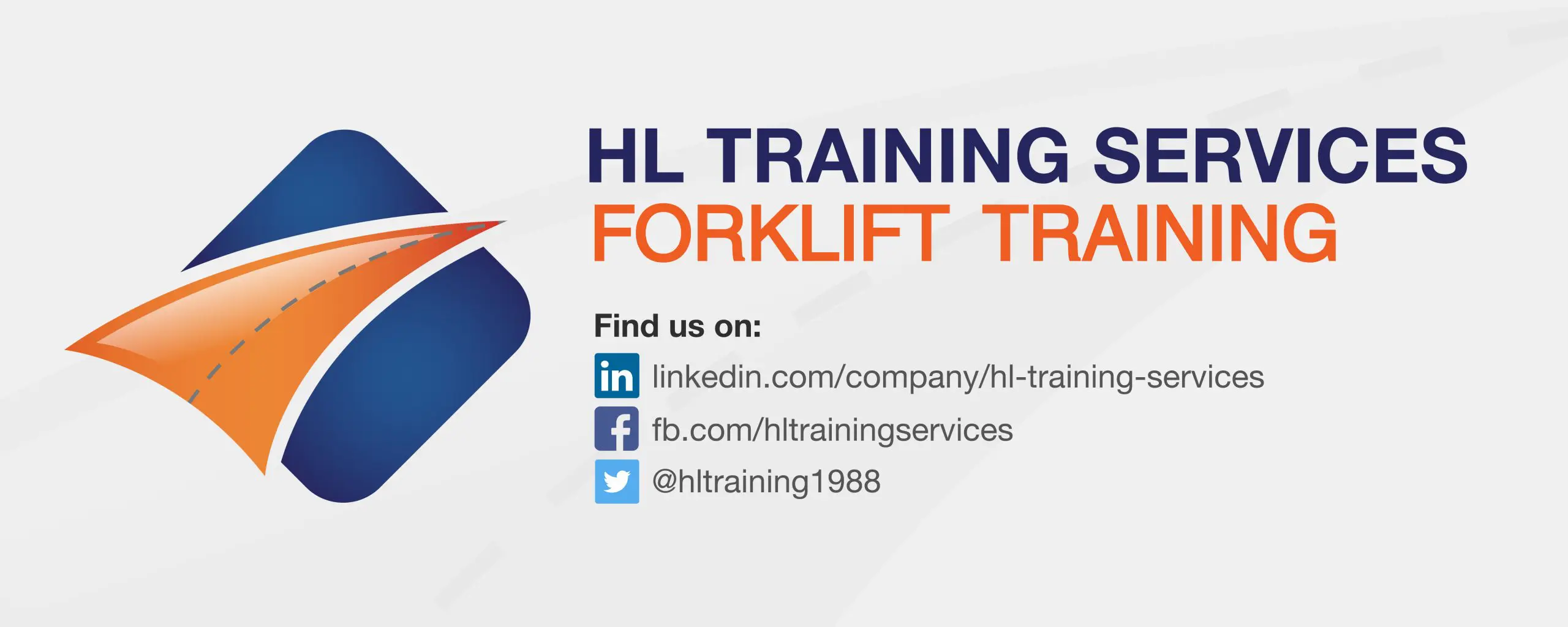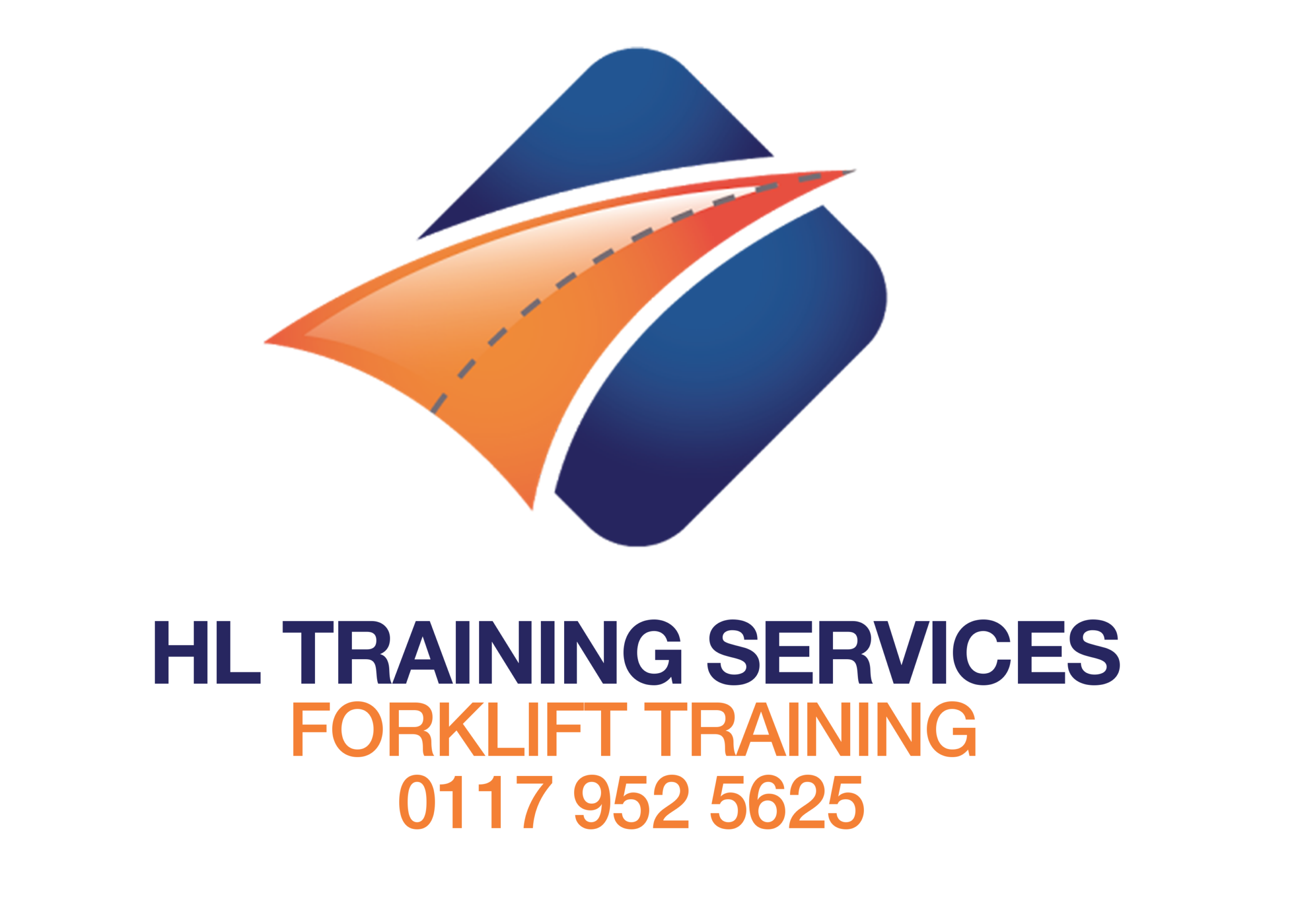Counterbalance Forklift Training
If you are looking for expert counterbalance forklift training, look no further than our extensive counterbalance courses from HL Training.
Find everything you need to know about the counterbalance training course here! You can also explore the full range of forklift operator training we have to offer.
What is a Counterbalance Forklift Truck?
Counterbalance forklift trucks are the most commonly used forklifts as they can be used for various purposes. From smaller trucks used for warehousing, loading and unloading lorries, and general movement of loads to larger trucks that can be used with attachments for heavier and more obscure loads, counterbalance forklift trucks can handle just about anything.
You should have the appropriate training for each forklift attachment you will be using in your role. Some examples of forklift attachments include:
- Clamps
- Rotating forks
- Boom attachments
- And more…
Please Note: If you are trained on a forklift with forks attachment, you may need specific job training if you are required to use any other attachments. Contact us for more information.
Types of Counterbalance Forklifts
A3: Pedestrian Operated Counterbalance Forklift Truck
B1: Rider Operated Counterbalance Lift Truck – up to and including 5,000kg lift
B2: Rider Operated Counterbalance Lift Truck – above 5,000kg up to and including 15,000kg lift
B3: Rider Operated Counterbalance Lift Truck – above 15,000kg
B4: Counterbalance Lift Truck
J1: Rough Terrain Counterbalance Forklift Truck
New testing standards were introduced for counterbalance forklifts in September 2017, and further amended in September 2018.

Benefits of Counterbalance Forklifts
- Easy operation
- Versatile
- Indoor and outdoor use
- Great manoeuvrability
- Ease of Maintenance
- Cost-effective
What Does the Counterbalance Course Entail?
Our Bristol-based counterbalance courses follow the accredited standard, ensuring every detail is covered for effective training. This counterbalance forklift training course covers, but is not limited to, the following:
- Regulations/legislation – including LOLER 1998, PUWER 1998, and HASAWA 1974
- Introduction to the forklift truck
- Capacity plates
- Stability
- Loading and unloading of vehicles
- Handling laden/unladen pallets
- Working within racking
Course Timings
Please note that course timings are based on a 3:1 (number of candidates to number of instructors). Ratio and timings may vary.
Novice: For a novice learner, the counterbalance forklift training course usually takes five days to complete successfully.
Experienced/Existing Operator: For those with previous experience, the counterbalance course takes three days to complete.
Conversion (from an alternative type of forklift): This course typically takes two days to complete. However, this is down to the instructors’ discretion. Further training may be recommended if the candidates do not reach the required standard.
Refresher Training: This course aims to refresh the knowledge of trained forklift operators. It takes one day to complete the refresher counterbalance forklift training.
What will a candidate receive upon completing an introductory operators course?
Certification: Upon successfully completing the counterbalance training course, you will be issued a certificate accredited by your chosen accrediting body (ITSSAR, RTITB or AITT).
Check out our accreditation page for more information.
Photo ID Cards: These are also available, although depending on your chosen accreditation, they may be added to the cost quoted.
Enrol in a Counterbalance Forklift Training Course Today
If our counterbalance forklift truck training course sounds like the right fit for your team, don’t hesitate to get in touch today to find out more. Our expert and friendly team are on hand now to help you with any advice and guidance on our available counterbalance forklift training courses.
Alternatively, discover more training courses available from HL Training to find the right requirements for your team and learn more about us to discover why you should choose our training courses.

Frequently Asked Questions
Find the answers to your queries in our most frequently asked questions below.
How can I obtain a counterbalance forklift licence?
It is a common misconception that you need a forklift licence to operate a forklift. ‘Forklift licences’ simply do not exist!
All you need to do to operate a forklift safely is pass a forklift operator’s course and receive a basic training certificate. In some cases, ID cards are offered alongside the certificate, commonly mistaken for a ‘licence’.
What is the difference between a counterbalance and reach forklift?
Two of the most common forklift machines are counterbalance and reach forklifts, each with a special purpose. Counterbalance forklifts are designed to carry heavier loads by using a heavy counterweight on the rear of the forklift to offset any weight and prevent the machine from toppling over.
Reach forklifts are designed to lift and carry loads that counterbalance machines can’t accomplish. Extended heights and smaller aisles sometimes hinder a counterbalance forklift. This is where a reach forklift comes in!
How often should counterbalance forklift training be refreshed?
It is a legal requirement for an employer to ensure their team is fully trained and competent throughout their employment and is able to operate forklifts safely.
For this reason, the HSE (in the HSG136) recommends that counterbalance courses are refreshed at least every three years to ensure the most up-to-date guidance and safety compliance.





